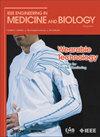Rubrics and direct measures in accreditation [From the Editor]
IEEE Engineering in Medicine and Biology Magazine
Pub Date : 2007-07-16
DOI:10.1109/MEMB.2007.384083
引用次数: 0
Abstract
T his column is a continuation of my biomedical engineering (BME) accreditation experience at the University of Connecticut. During the first part of this year, I have been rewriting the self-study based on the input from the program evaluator mock visit and adding new information. The data and evaluation results from the BME ABET Committee have been tabulated and summarized. One of the most important items to include in a self-study is a summary of the direct and indirect measures (data and evaluation) and the changes in the curriculum that have evolved from the evaluation (commonly referred to as “closing the loop”). For indirect measures, we use senior exit and EBI surveys. We have used rubrics as direct measures of program outcomes a-k, and program criteria 8. There are at least two direct measures for almost every program outcome in our self-study. Most of the direct measures are from the final reports or presentations in our senior design courses. I first became aware of the use of rubrics from a presentation by John Gassert (Milwaukee School of Engineering) at the ASEE conference in 2005. Done right, creating rubrics is a time-consuming task as the goal is to describe all outcomes of the analysis ahead of time for different levels of performance. We selected performance levels as novice, apprentice, proficient, and expert. Within each level of performance are descriptions of those characteristics, sometimes with as few as one characteristic [i.e., (k) demonstrates an ability to use the techniques, skills, and modern engineering tools necessary for engineering practice has only one characteristic for each performance level, which for novice is “No use of computational tools beyond word processing and presentation认证的准则及直接措施[编者引]
本专栏是我在康涅狄格大学生物医学工程(BME)认证经历的延续。在今年的上半年,我一直在根据项目评估员模拟访问的输入重写自学,并添加新的信息。BME ABET委员会的数据和评估结果已制成表格并进行了总结。自学中最重要的项目之一是对直接和间接措施(数据和评估)以及从评估中演变而来的课程变化的总结(通常被称为“闭环”)。对于间接措施,我们使用高管离职和EBI调查。我们已经使用了规则作为项目结果a-k和项目标准8的直接度量。在我们的自学中,几乎每个项目的结果都至少有两个直接的衡量标准。大多数直接的衡量标准来自于我们高年级设计课程的期末报告或展示。2005年,密尔沃基工程学院的John Gassert在ASEE会议上的一次演讲中,我第一次意识到规则的使用。如果做得好,创建规则是一项耗时的任务,因为目标是提前描述不同级别性能的所有分析结果。我们选择的性能等级为新手、学徒、熟练和专家。在每个性能级别中都有对这些特征的描述,有时只有一个特征[例如,(k)展示了使用技术,技能和工程实践所需的现代工程工具的能力,每个性能级别只有一个特征,对于新手来说是“除了文字处理和表示之外不使用计算工具”
本文章由计算机程序翻译,如有差异,请以英文原文为准。
求助全文
约1分钟内获得全文
求助全文

 求助内容:
求助内容: 应助结果提醒方式:
应助结果提醒方式:


